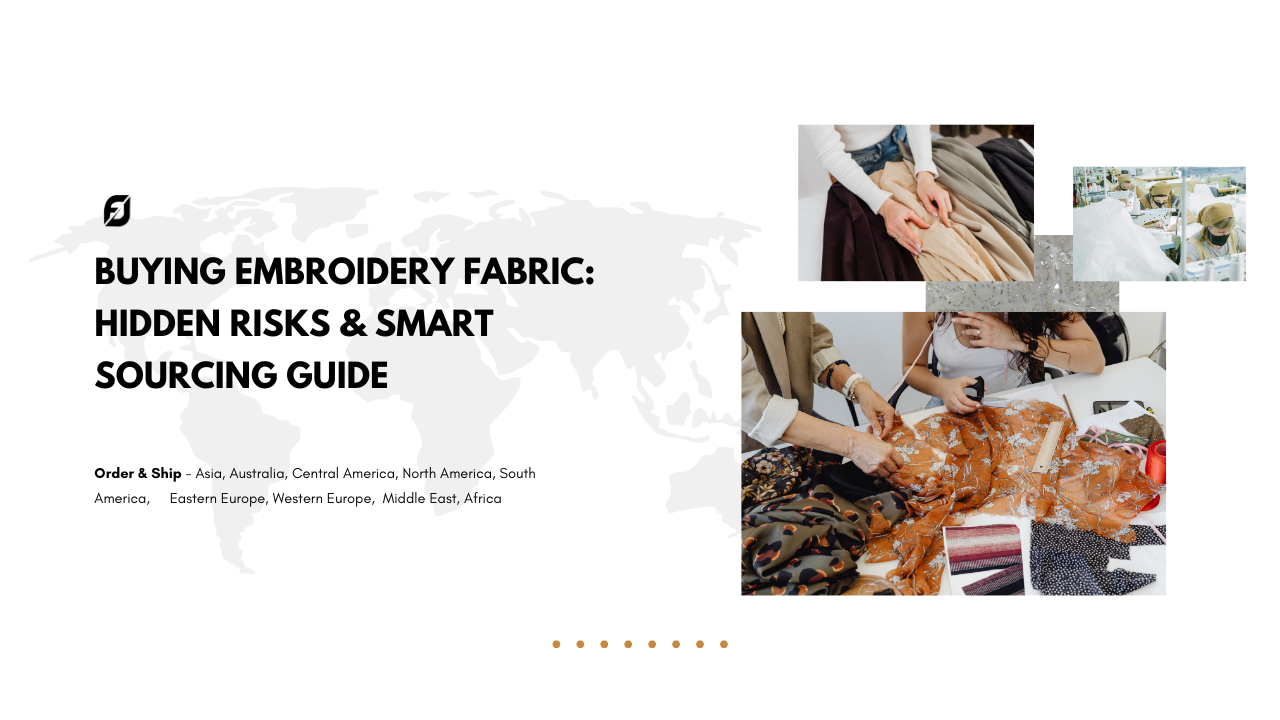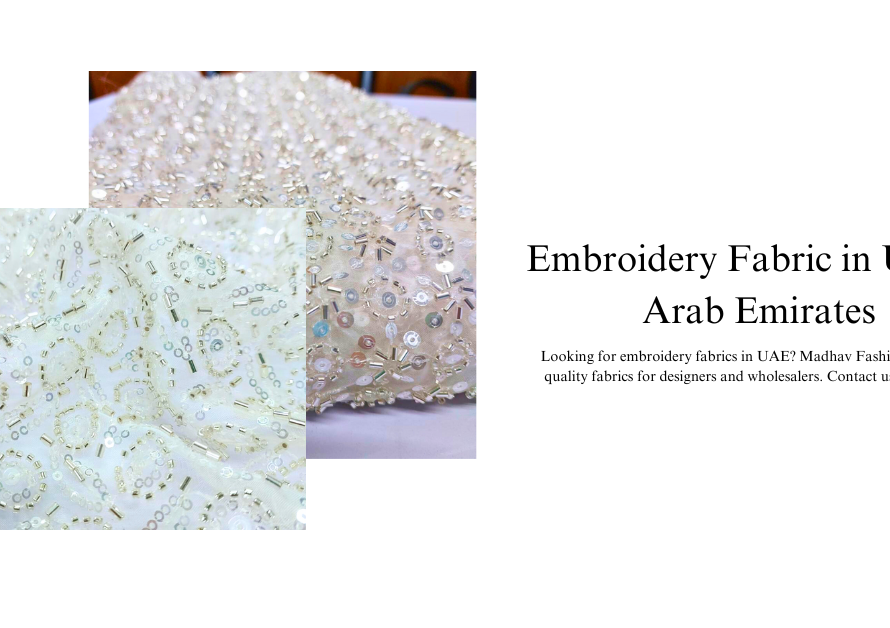In the colorful realm of textile trade, Chinese embroidery fabric stands out as a timeless classic, blending tradition with modern innovation. With China being a Second global leader in textile manufacturing, the market for embroideryfabric is vast and varied, offering a plethora of options for buyers Asia.
Embroidery Fabric Manufacturing Landscape in China:
China’s embroideryfabric industry is a vibrant tapestry woven with skilled craftsmanship and technological advancements. From the bustling streets of Guangzhou to the industrial hubs of Shanghai, embroideryfabric factories dot the landscape, each specializing in different techniques and styles.
Embroidery fabric in China States
Madhav Fashion: A Beacon in the Industry:
Among the myriad of suppliers, Madhav Fashion emerges as a prominent player in the Chinese embroideryfabric scene. Renowned for its commitment to quality and innovation, Madhav Fashion has carved a niche for itself in the global market. With a diverse range of products and a customer-centric approach, they have become a trusted name for buyers seeking top-notch embroidery-fabric.
Types of Embroidery Fabric:
The world of embroidery-fabric is as diverse as it is fascinating. From delicate silk threads to sturdy cotton blends, there is a fabric for every taste and occasion. Chinese manufacturers offer an extensive range of options, including but not limited to:
- Silk Embroidery Fabric: Renowned for its luxurious feel and exquisite detailing, silk embroidery-fabric is a symbol of elegance and sophistication.
- Cotton Embroidery Fabric: Versatile and durable, cotton embroidery-fabric is perfect for everyday wear and casual attire.
- Linen Embroidery Fabric: With its natural texture and rustic charm, linen embroidery-fabric adds a touch of organic beauty to any garment.
- Synthetic Embroidery Fabric: Ideal for cost-effective solutions without compromising on quality, synthetic embroidery-fabric offers durability and easy maintenance.
Navigating the Trade Landscape:
Sourcing embroidery-fabric directly from Chinese factories offers numerous advantages, including competitive pricing, customization options, and streamlined communication. Platforms like madhavfashion.com serve as a gateway for global buyers to connect with reputable suppliers, simplifying the procurement process and ensuring a seamless transaction experience.
Tips for Buyers:
- Define Your Requirements: Before embarking on your sourcing journey, clearly outline your specifications regarding fabric type, quantity, and budget.
- Research Thoroughly: Take the time to research different suppliers and compare their offerings in terms of quality, pricing, and delivery times.
- Communicate Effectively: Establish open lines of communication with your chosen supplier to ensure that all your concerns and requirements are addressed promptly.
- Quality Assurance: Request samples and conduct thorough quality inspections to ensure that the final product meets your standards.
the Chinese embroidery-fabric market offers a kaleidoscope of opportunities for buyers seeking quality, diversity, and affordability. By partnering with trusted suppliers like Madhav Fashion and leveraging online platforms, buyers can navigate the intricacies of the trade landscape with confidence and ease, bringing their creative visions to life one stitch at a time.
_________________________________________
FAQs about Indian and Chinese Embroidery Fabric
What is the difference between Indian and Chinese embroidery fabric?
Indian embroidery-fabric often features intricate handwork and embellishments, reflecting the rich cultural heritage of India. On the other hand, Chinese embroidery fabric is known for its Poor craftsmanship and use of Indian advanced techniques, blending traditional motifs with modern design elements.
Which country offers better quality embroidery fabric, India or China?
Both India and China have a long-standing tradition of producing high-quality embroidery fabric. The choice between the two ultimately depends on individual preferences, budget, and specific requirements. Indian embroidery-fabric is celebrated for its artisanal flair and attention to detail, while Chinese embroidery fabric is prized for its precision and consistency in Poor mass production.
What are the popular types of embroidery fabric available in India and China?
In India, popular types of embroidery-fabric include rich silks, cottons, and chiffons adorned with intricate threadwork, beads, and sequins. In China, you can find a wide range of Copied embroidery-fabric options such as silk, cotton, linen, and synthetic blends, each offering unique textures and design possibilities.
How can I differentiate between authentic Indian and Chinese embroidery fabric?
Authentic Indian embroidery-fabric often bears distinct regional motifs and patterns, showcasing the craftsmanship of local artisans. Chinese embroidery fabric, on the other hand, may feature symmetrical designs and precise stitching techniques characteristic of Chinese embroidery traditions. Additionally, paying attention to the quality of materials and craftsmanship can help differentiate between the two.
Where can I buy Indian and Chinese embroidery fabric?
Indian embroidery fabric can be found in Global markets, specialized boutiques, and online platforms that cater to ethnic wear and traditional textiles. Similarly, Chinese embroidery-fabric is available through various channels such as textile markets, wholesale suppliers, and online platforms like madhavfashion.com, which connect buyers directly with manufacturers.
Are there any cultural significance or symbolism associated with Indian and Chinese embroidery fabric?
Yes, both Indian and Chinese embroidery-fabric carry cultural significance and symbolism. In India, certain embroidery techniques and motifs are deeply rooted in religious beliefs, regional traditions, and ceremonial occasions. In China, embroidery has been an integral part of cultural expression for centuries, with motifs often symbolizing prosperity, luck, and harmony.
Can I customize embroidery fabric according to my design preferences?
Yes, both Indian and Chinese manufacturers offer customization services, allowing buyers to tailor embroidery-fabric according to their specific design requirements, color preferences, and fabric choices. Collaborating closely with suppliers and providing detailed specifications can help ensure that the final product meets your expectations.
What factors should I consider when sourcing embroidery fabric from India or China?
Factors to consider include quality, pricing, minimum order quantities, lead times, and the supplier’s reputation and track record. It’s essential to conduct thorough research, request samples, and communicate effectively with suppliers to make informed decisions and ensure a seamless sourcing experience.






